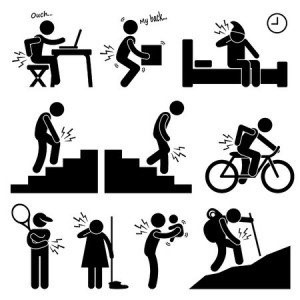Nov25Mon

For most people today, injury doesn’t come from sports or too much activity, but rather from repetitive micro strains at work. Repetitive strain injury, or RSI, happens when you constantly repeat the same movements, causing the areas involved to wear and tear. This can be a result of the more obvious movements in exercise and sports, or from more subtle motions like typing, gardening, assembling, or bending. Regardless of what you do, when the body is put into stressful positions for long periods of time, it will start to break down.
The damage usually starts in your joints, muscles, and soft tissues, but if it’s left untreated, it will turn into more serious injuries and chronic pain. This includes things like lower back pain from having a desk job or lifting heavy objects, and having headaches and neck pain from staring down at a screen or standing in poor posture.
People often stop doing the things that are causing them pain in order to give themselves time to heal, but many find that going back to the activity once again triggers the pain. Remember that it’s not occasional strains that lead to long term pain, but rather repeated stresses over several months or years. Often people resort to medication to cover up the symptoms, but for most the pain doesn’t go away.
Some common signs that you have RSI include stiffness and pain in the area being strained. Since your nerves go through your spine and travel throughout your whole body, the nerves in your upper back connect to your arms, and the nerves in the lower back connect to your legs. This means that issues with the low back can lead to symptoms like numbness, tingling, fatigue, and popping in the legs and feet.
When you’re constantly straining your joints and soft tissue, your body responds by making scar tissue; think of that knot you have in your shoulder from hunching all day. Scar tissue acts as an adherent, making what’s stiff stiffer, and what’s weak weaker. This becomes a downward spiral leading to chronic pain and injuries, so action needs to be taken as soon as you notice the first signs.
You can break up that scar tissue with Active Release Technique (ART) which improves flexibility and eliminates pain. For the ultimate package, pair ART with chiropractic to loosen stiff joints and improve posture. With bad posture, the weight of gravity is more straining to your body because your muscles must work harder to hold bad positions. Choose the right treatments that will correct the cause so you can live a more balanced lifestyle.
McGahey, K. Repetitive Strain Injury And How To Beat It. Retrieved from bellevuechiropractor.com/conditions-treated/repetitive-strain/
Disclaimer: The information on this site is provided in good faith for general information only. We make no representation or warranty of any kind for the information on the site.
Leave a Comment